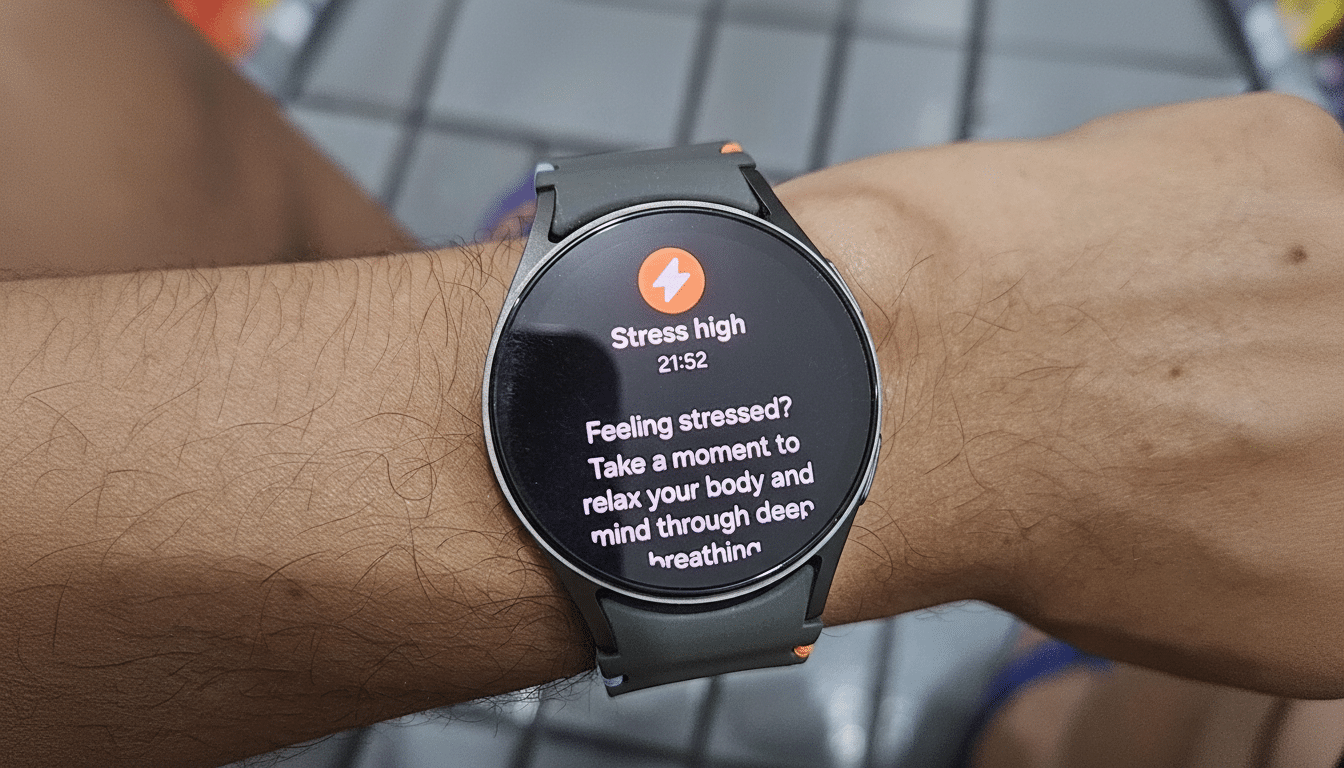Samsung’s latest One UI 8 Watch software update is generating a flood of complaints from Galaxy Watch wearers that their watches are triggering “high-stress” alerts far more than usual—even when they feel fine. Hundreds of these reports came after the new software was pushed to models like the Galaxy Watch7 and Galaxy Watch Ultra. Many are questioning whether the stress-detection algorithm has been changed or if its detection thresholds have been adjusted.
After updating their watches, many users began to see frequent high-stress notifications, even though their typical days haven’t changed. Samsung did not disclose any changes to its stress-detection algorithm in the public release notes, so the exact reason for the reports remains unknown. Speculation centers on updated detection thresholds or changes to sensor collection frequency for heart rate variability (HRV).

What changed in One UI 8 Watch and possible causes
One UI 8 Watch, running on Wear OS 6, introduced features like the Now Bar and a refreshed tiles experience. However, these are not the only notable changes for the Galaxy Watch lineup. Many adjustments appear to have taken place behind the scenes, some of which can affect front-end biometric features. If the update shortened the period of metrics collection or increased sensitivity, more everyday fluctuations could now cross the alert threshold.
How stress detection works on Samsung Galaxy Watch
Galaxy Watches use optical sensors to track pulse data via photoplethysmography, from which they compute HRV. HRV is the small time difference between heartbeats, and some research links reduced trends with physiological stress. When the watch encounters a pattern that fits stress, it delivers an alert and may flash “breathe” notifications through Samsung Health.
HRV is highly context-specific. Motion, a loose strap fit, temperature swings, caffeine, dehydration, or even walking quickly can shift HRV in ways an algorithm might identify as stress. People often presume “stress” implies a mental state; nevertheless, stress is inferred from physiology on wearables. You may feel calm but register heightened sympathetic activity if you slept less, are recuperating from a workout, or are digesting a meal. The watch cannot sense feelings; it senses signals that parallel stress inside the confines of a controlled study. This distinction between subjective experience and physiological markers is well established.

The American Heart Association has explained that HRV is influenced by fitness, respiration, medications, and lifestyle characteristics. This indicates that a “high-stress” notification might reflect body load rather than emotional distress.
User reports point to software issue across models
There is a common pattern in user accounts. Community threads describe multiple high-stress alerts during the workday while seated, or while relaxing at home watching TV—situations that rarely triggered alerts before the update. The pattern cuts across watch models operating on One UI 8 Watch, implying a software-model regression rather than a device defect. Although anecdotal, the concurrence of complaints shortly after the update is unlikely to be a coincidence.
Expert insights and the limits of wearable precision
Research from Stanford Medicine has identified that wrist wearables are generally trustworthy for heart rate at rest, but accuracy for heart rate and variability estimates varies between brands and activities. Measuring HRV with optical sensors is harder, and estimating it accurately in the wild is harder yet. Reviews in the Journal of Medical Internet Research note that many consumer stress-detection systems work well in laboratory settings, but daily-life performance is marred by motion and environmental artifacts. Other platforms relying on HRV, like Fitbit’s stress score or Garmin’s Body Battery, face similar constraints. These technologies are useful for broad trend-tracking and recovery insights, but they are not medical diagnoses, and when sensitivity is turned up, they will respond sharply.
What you can do now to reduce false stress alerts
- Ensure a snug fit one finger above the wrist bone, and clean the sensors.
- Update Samsung Health and all watch apps, then reboot; patches often arrive quickly after reports circulate.
- If enabled, toggle continuous stress measurement off and then on; perform a manual stress reading while seated and breathing comfortably to set a calm baseline.
- Avoid measurement shortly after caffeine, exercise, or a hot shower, as these can nudge HRV and trigger alerts.
- Disable high-stress notifications, or use Focus/Do Not Disturb, until a fix arrives; you can still track trends in Samsung Health.
What to expect next from Samsung and your watch
Given the volume of user feedback, it would not be surprising to see a clarification or tuning update. In the interim, treat alerts as indications of bodily load rather than a sign of anxiety—nonetheless, you may still be feeling strain. If you notice unexplained, steady rises, particularly with heart flutter or dizziness, contact a clinician. Also watch for software updates and your own patterns; they will most likely settle down soon.

